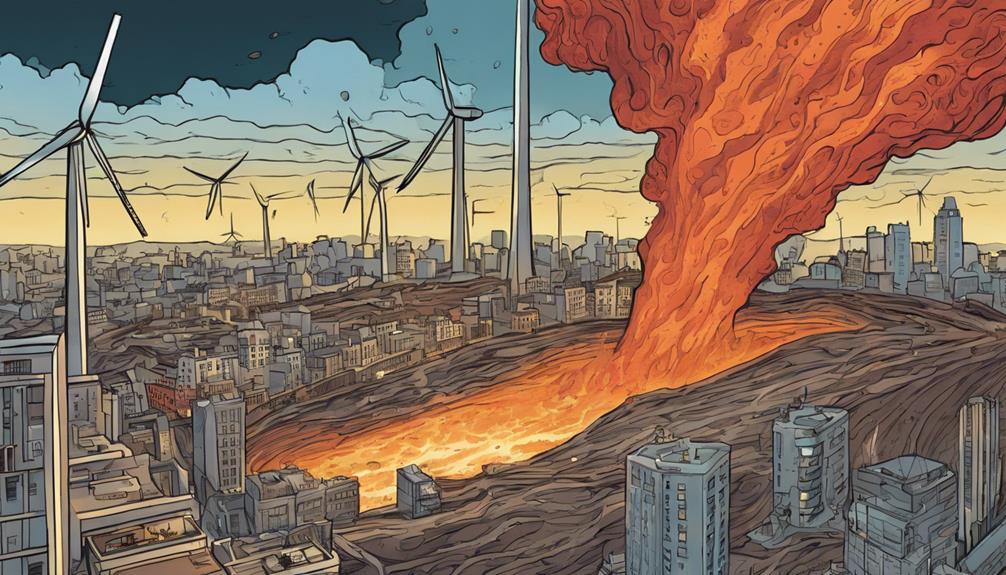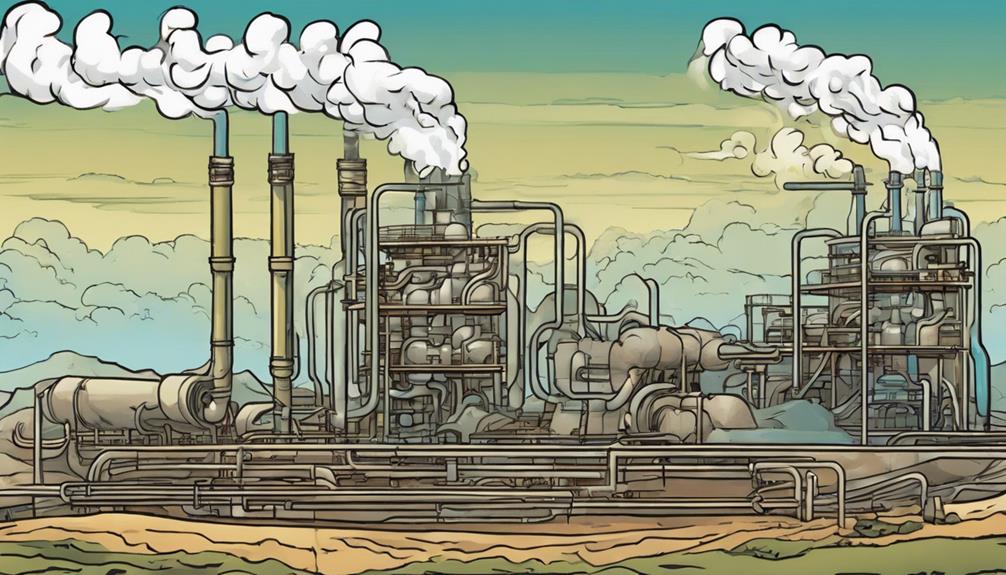As I explore the benefits of government-supported windmills, I'm convinced they're a game-changer for our planet's future. By investing in wind energy, governments can reduce costs for consumers and businesses, ensure steady returns, and drive innovation. With a focus on safety, social, and environmental considerations, these initiatives can create jobs, boost local economies, and promote sustainable energy generation. While there are financial risks and challenges to overcome, the long-term benefits are undeniable. As I dig deeper, I'm excited to uncover more about how government-supported windmills can pave the way for a greener, more sustainable tomorrow.
Key Takeaways
- Government-backed windmills reduce costs for consumers and businesses through economies of scale and steady returns from long-lifespan turbines.
- Investment in windmills drives technological advancements and innovations in renewable energy, contributing significantly to sustainable energy generation.
- A regulatory framework focusing on safety, environmental considerations, and social impact is crucial for the successful implementation of government-backed windmills.
- Government investment in windmills stimulates economic growth through job creation, attracts investment, and promotes local business development, leading to long-term savings.
- Overcoming challenges like intermittency, high upfront costs, and environmental concerns is essential to maximize wind energy potential and pave the way for a sustainable future.
Advantages of Government Ownership

By taking the reins of windmill ownership, governments can harness the full potential of this renewable energy source, accessing a multitude of benefits that ultimately pave the way for a cleaner, greener future.
One important advantage is economies of scale, which reduces costs for consumers and businesses. Additionally, government ownership guarantees steady returns due to the long lifespan of modern turbines. This investment also drives technological advances and innovations, contributing significantly to renewable energy generation.
Government-owned windmills play a vital role in creating a cleaner environment, and incentives like tax credits and subsidies promote wind farm development. Overall, government ownership is a key factor in achieving a sustainable energy future.
Regulatory Framework and Impact

As governments invest in wind energy, establishing a strong regulatory framework is vital to guarantee the safe and efficient operation of wind turbines, minimize negative impacts on local communities, and protect the environment. This framework secures compliance with safety standards, considers environmental factors, and regulates turbine operation to minimize disturbances. Community engagement is also important, as it addresses concerns and secures local involvement.
| Regulatory Focus | Social Impact | Environmental Considerations |
|---|---|---|
| Safe turbine operation | Job creation, local economy boost | Wildlife protection, habitat preservation |
| Efficient energy production | Minimizing noise disturbances | Environmental impact assessment |
| Compliance with safety standards | Addressing community concerns | Sustainable solution promotion |
Financial Considerations and Risks
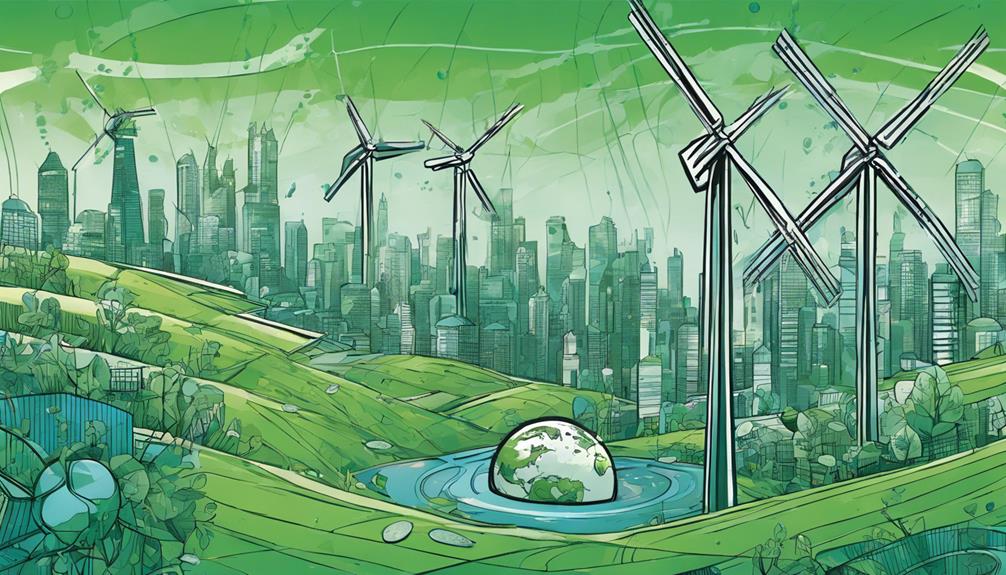
While government-owned windmills offer numerous benefits, it's important to weigh these advantages against the potential financial drawbacks, including increased energy costs for ratepayers and taxpayer expenses for maintenance. A thorough cost-benefit analysis is essential to ensure long-term financial viability.
Governments must assess risks before investing taxpayer money, considering the potential impact on local economies and ratepayers. While economies of scale and steady returns are significant advantages, they must be balanced against potential risks.
Economic Benefits and Growth
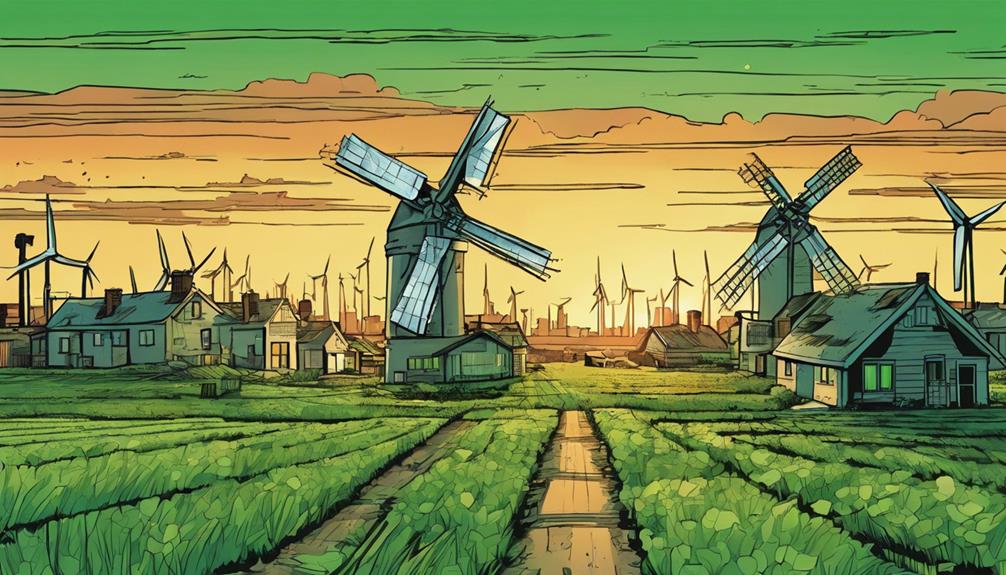
Government investment in wind energy creates a ripple effect, stimulating economic growth through job creation across various sectors, from manufacturing and installation to maintenance and servicing.
As wind farms sprout up, they attract investment and promote local business development, leading to a boost in the local economy. The cost-effectiveness of wind energy translates to long-term savings for consumers and businesses, making it an attractive option.
I believe that government investment in wind energy is a wise move, driving technological advancements and innovation in turbine technology. By investing in research, we can improve turbine efficiency, work on grid integration for a stable power supply, and focus on developing cost-effective energy storage solutions for continuous clean energy.
Overcoming Challenges and Limitations

Despite the numerous economic benefits, wind energy faces several challenges and limitations that must be addressed to maximize its potential.
As I explore the world of government-backed windmills, I've come to realize that overcoming these obstacles is essential for a sustainable future.
One major challenge is the intermittent nature of wind power, which can lead to grid instability.
Another limitation is the high upfront costs, although these are decreasing over time.
Additionally, concerns about noise pollution, visual impact, and wildlife disruption must be mitigated through careful planning and community engagement.
Future of Renewable Energy
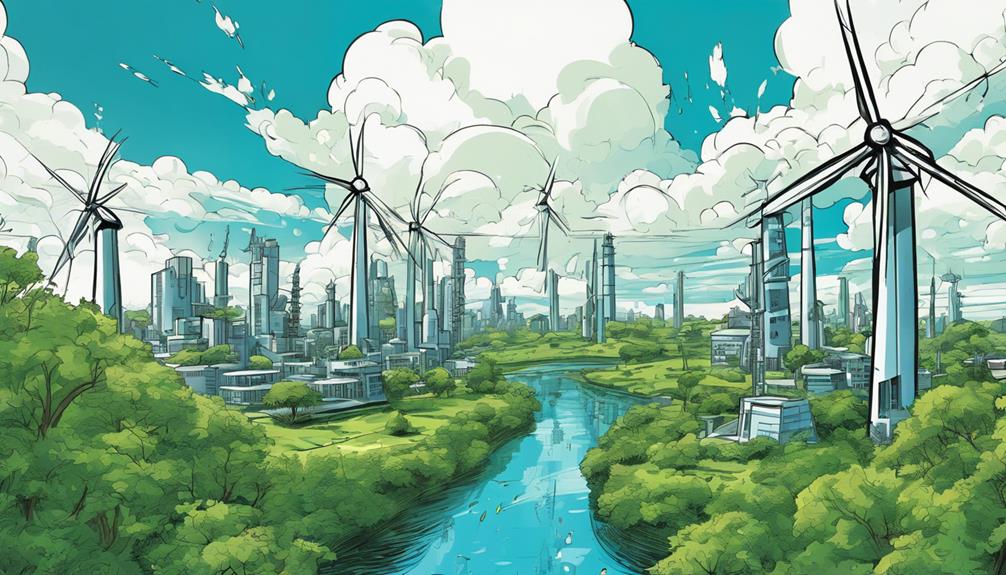
As I envision the future of renewable energy, I'm convinced that wind power will play a pivotal role in shaping a sustainable tomorrow, with advancements in technology and infrastructure poised to propel this clean energy source to new heights.
Here are four key areas where I see significant potential for growth:
- Enhanced Turbine Efficiency: Developments in turbine design and materials will boost energy output, reducing costs and environmental impact.
- Upgraded Energy Storage: Innovations in energy storage solutions will enable a more stable and reliable supply of clean energy.
- Grid Enhancement: Improvements to grid infrastructure will facilitate seamless integration of wind power, ensuring a consistent flow of energy.
- Global Collaboration: International cooperation will drive the adoption of wind energy, sharing best practices and accelerating the shift to a low-carbon economy.
A Greener Path Forward
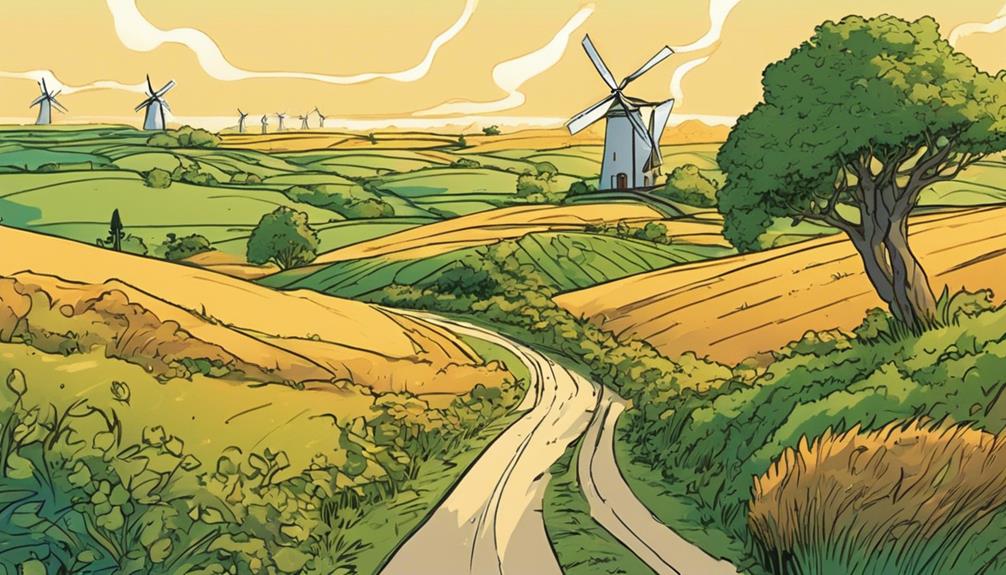
My vision for a greener path forward is rooted in the understanding that harnessing wind energy is a crucial step towards reducing our reliance on fossil fuels and mitigating climate change.
As governments invest in windmills, I see a future where renewable energy becomes the norm. With advancements in technology, wind turbines will become more efficient, and energy storage solutions will guarantee a stable power supply.
I envision governments collaborating with stakeholders to address concerns and ensure that wind farms are integrated into local ecosystems seamlessly. By working together, we can overcome the challenges and create a sustainable future where clean energy powers our homes, industries, and transportation.
Frequently Asked Questions
How Do Government-Backed Windmills Address Intermittent Energy Supply Concerns?
When it comes to intermittent energy supply concerns, I believe government-backed windmills can address this issue by investing in research to improve turbine efficiency and developing cost-effective energy storage solutions for continuous clean energy.
Can Government-Owned Windmills Be Integrated With Existing Power Grids Seamlessly?
"As I weave together the threads of renewable energy, I find that government-owned windmills can indeed be integrated with existing power grids seamlessly, ensuring a harmonious marriage of clean power and reliable supply."
What Measures Ensure Public Safety Around Government-Backed Windmill Installations?
'I guarantee public safety around government-backed windmills by enforcing strict regulations, conducting regular maintenance, and engaging with local communities to address concerns, thereby minimizing risks and promoting a secure environment.'
How Do Government-Backed Windmills Impact Local Food Production and Agriculture?
I've found that government-backed windmills can impact local food production and agriculture by occupying arable land, potentially disrupting crop cycles, and affecting livestock habits, but careful planning can mitigate these effects.
Can Government-Backed Windmills Be Used to Power Electric Vehicle Charging Stations?
"I believe government-backed windmills can definitely power electric vehicle charging stations, providing a clean and sustainable energy source to support the growing demand for eco-friendly transportation."
How Do Government-Backed Windmills Address Biomass Pollution Challenges in Green Energy Initiatives?
Government-backed windmills play a crucial role in tackling biomass pollution challenges in green energy initiatives. By harnessing the power of wind, these windmills provide a clean and renewable source of energy, reducing the reliance on biomass burning and its associated pollution.
What are the potential environmental impacts of government-backed windmills and how can they be addressed in paving the green future?
Government-backed windmills’ environmental impact opportunities can lead to potential issues such as wildlife disruption and noise pollution. To address these concerns and pave the way for a greener future, implementing proper site selection and wildlife impact assessments can help minimize the negative effects. Additionally, investing in advanced noise-reducing technology can mitigate sound pollution.
Conclusion
As I stand beneath the windmill's towering presence, I'm reminded of the serendipitous alignment of government backing and sustainable progress. It's no coincidence that the gentle hum of these blades echoes the quiet confidence of a nation investing in its future.
As the turbines stretch towards the horizon, I'm left with an unshakeable sense that government-backed windmills will indeed pave the way for a greener, more sustainable tomorrow.


